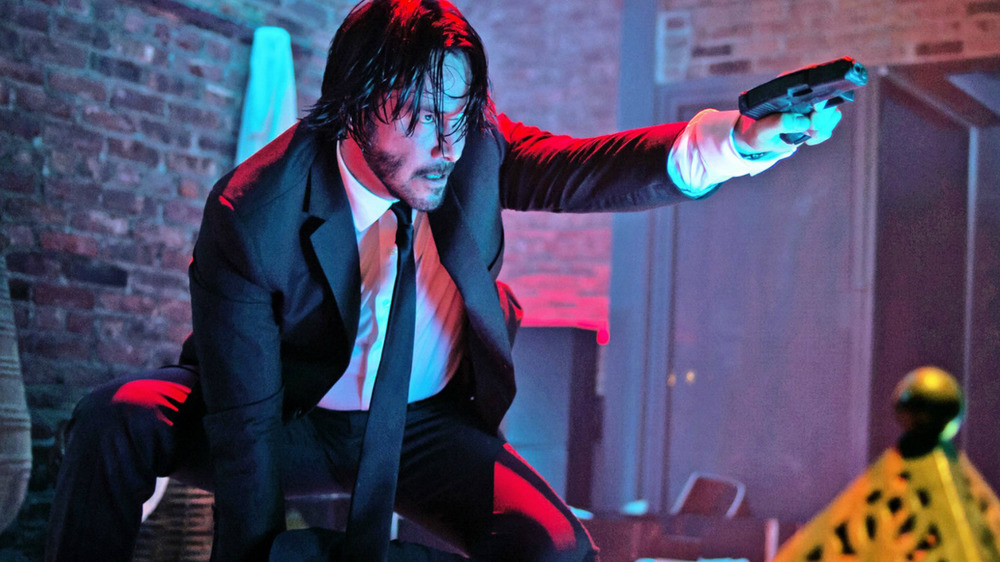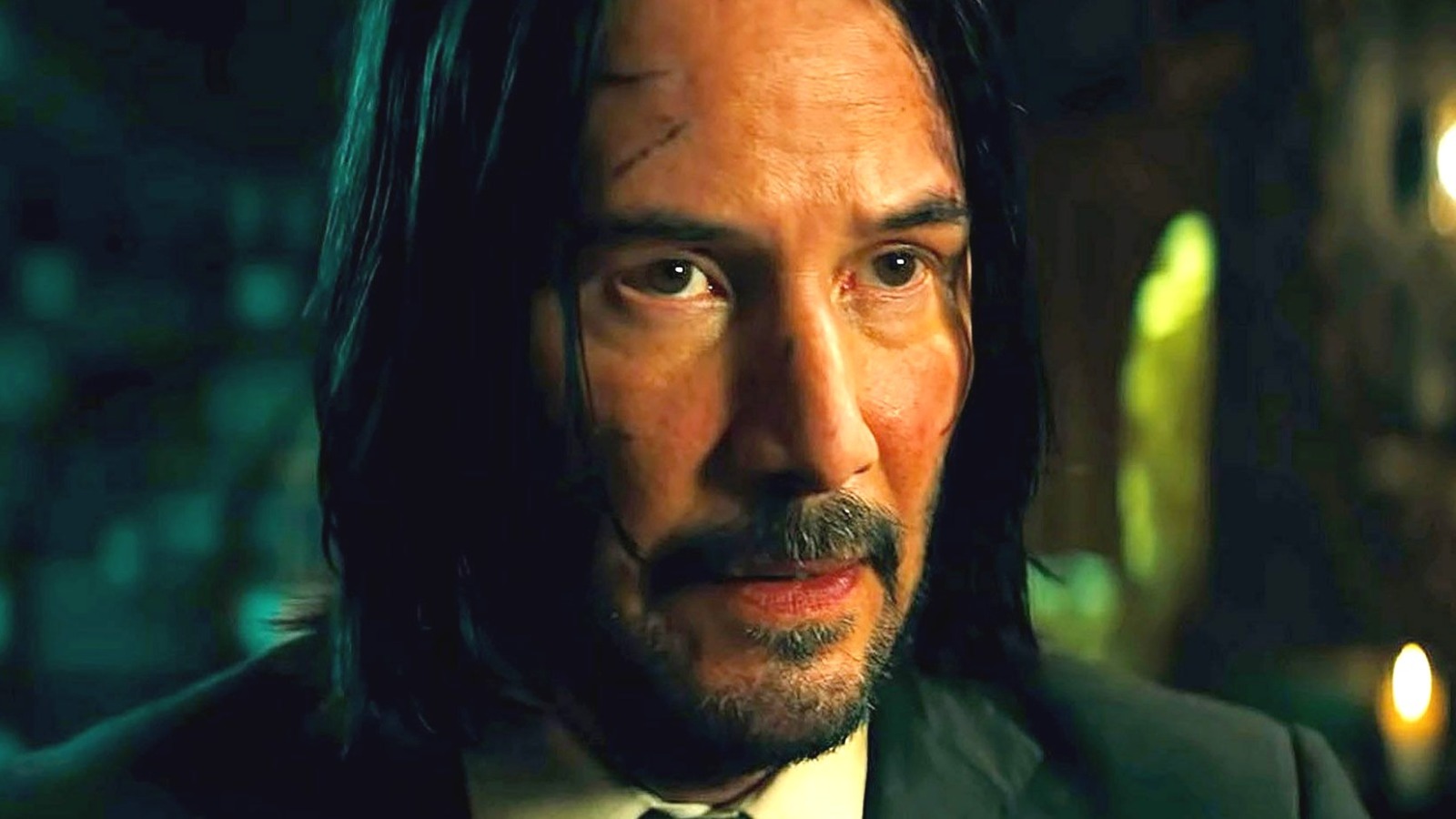Decoding The John Wick 2 Ending: Explained & Explored
Is the intricate world of John Wick, with its complex rules and shadowy organizations, truly understood by its audience? The endings of the John Wick films, especially Chapter 2 and Chapter 3: Parabellum, have sparked intense debate and offer crucial insight into the protagonist's journey and the franchise's future.
The genesis of the John Wick saga, masterminded by Derek Kolstad and brought to life by the iconic Keanu Reeves, centers on the eponymous retired hitman. Wick's foray back into his brutal profession stems from a deeply personal loss, plunging him into a world of assassins, clandestine hotels (The Continental), and a highly structured code of conduct. The first film laid the groundwork, but it was the sequels that delved deeper, establishing a sprawling universe rife with hidden meanings and unforeseen consequences.
The narrative threads woven throughout the franchise are often complex, with nuances that can be easily missed. Consider the impact of the ending of John Wick: Chapter 2. The film concludes with Wick breaking the Continental's sacrosanct rules, leading to dire consequences. His actions set the stage for Chapter 3: Parabellum, where he finds himself hunted, excommunicated, and desperately seeking survival. It's a testament to the series' strength that even those familiar with the films find themselves re-evaluating and re-analyzing the narrative, searching for hidden layers. This re-evaluation process is helped by the involvement of Keanu Reeves himself who provides various explanations to the plot twists.
The ending of John Wick: Chapter 2 is a pivotal moment, and understanding its implications is essential for grasping the subsequent films. This is precisely what Matt Goldberg does when trying to explain the ending of the film, and its potential for building upon Wick's character.
The world of John Wick operates under a complex set of rules, and breaking them comes with severe penalties. The Continental, a haven for assassins, functions as a neutral ground. While it provides services, it also enforces a strict code. Johns actions in Chapter 2, specifically his killing of Santino D'Antonio (Riccardo Scamarcio) on Continental grounds, constitute a grave violation. This violation triggers the chain of events that propel the narrative of Chapter 3.
The brutal scene between Wick and Cassian, Gianna's bodyguard, as well as Ares, Santino's trigger woman, during John's escape is a prime example of the physical prowess expected in the series. However, it is the rules that bind and shape the world, giving meaning to the violent conflict.
Winston, the enigmatic manager of The Continental, plays a crucial role in Wick's story. He is not simply an adversary seeking Wick's demise. As the films progress, we see a more complex dynamic. Winston has a fondness for John. He's simply cutting him off, not killing him. Winston's decisions have significant implications, demonstrating that the Continental, while bound by its rules, is not devoid of personal relationships or compassion. At the very least, there is a calculated risk. One that protects the rules, but still is advantageous for Wick.
The subsequent chase and conflict in Chapter 3: Parabellum, underscores this point. John finds himself pursued by those seeking to collect the bounty on his head. The stakes are high, and Wick's survival depends on his ability to navigate this treacherous landscape. The implications for the wider world are undeniable, a world populated by ruthless individuals operating within a system that has built-in contradictions.
Redditors have frequently discussed the ending of John Wick: Chapter 2, offering various interpretations. The debate centers around the potential for a war between Wick and the assassin community. The implications are far-reaching.
The excommunication of Wick is a critical plot point. Winston's actions, particularly the call to the hitman hotline, highlight the interconnectedness of the assassin network. The order of excommunication within one hour amplifies the sense of urgency and isolation. The film's ending showcases Wick's predicament, yet it also underscores his agency. Despite the dire circumstances, Wick's choice to kill Santino, which put him in this situation, allows him to maintain a semblance of control over his fate, a contrast to Santino.
The intricate world of John Wick and its many layers makes it the cornerstone of a franchise. The way the first movie ends and the fluid way the second one opens, are proof of a well designed story.
The franchise delivers on the promise of its world. Reeves' performance is captivating and the fight choreography is breathtaking.
In John Wick: Chapter 2, the titular hero, played by Keanu Reeves, faces a dire situation. Having killed Santino D'Antonio on Continental grounds, he is declared "excommunicado." The consequences are severe. But the ending of the film highlights Wick's agency, with the choices he makes defining his fate.
The intricate narrative of the John Wick franchise, created by Derek Kolstad and brought to life by Keanu Reeves, hinges on the character's decisions. His actions in Chapter 2 create the circumstances in Chapter 3, including the need to go on the run. The ending of Chapter 2 acts as a catalyst, pushing Wick into a world of violence and danger.
Winston, the manager of the Continental, is a pivotal figure in the John Wick universe. Winston's actions, though seemingly contradictory, are often driven by a complex mix of pragmatism and loyalty. He makes a call to the hitman hotline, effectively isolating John Wick from the network. This act underscores the importance of the rules and the consequences of breaking them.
The way the John Wick films are structured, the connections are easy to follow. During his escape, Wick is attacked by Cassian, as well as Ares. These characters represent the forces working against Wick, as the underground world of assassins is in pursuit.
The franchise is more than just action. It delves into the themes of choice, loyalty, and the consequences of our actions. The ending of John Wick: Chapter 2 is a turning point.
The film's ending highlights John's choices.
The ending of John Wick: Chapter 2 leaves a lasting impression, shaping the events of the subsequent films. The series offers insight and commentary on a world of assassins and how it is influenced by their choices.
| Characteristic | Details |
|---|---|
| Full Name | John Wick (born Jardani Jovonovich) |
| Alias | Baba Yaga (The Boogeyman) |
| Played By | Keanu Reeves |
| Nationality | American (of Belarusian descent) |
| Known For | Legendary Hitman, Former assassin |
| Skills | Expert in hand-to-hand combat, firearms, tactical driving, and multiple forms of martial arts |
| Affiliations | The Continental Hotel (former), High Table (former) |
| Significant Relationships | Helen Wick (wife, deceased), Winston (friend and Continental manager), Marcus (friend and fellow assassin), Cassian (associate and bodyguard), Sofia (associate) |
| Moral Alignment | Anti-Hero |
| Appearances | John Wick (2014), John Wick: Chapter 2 (2017), John Wick: Chapter 3 Parabellum (2019), John Wick: Chapter 4 (2023), and the Ballerina spin-off film (2024) |
| Quote | "Yeah, I'm thinking I'm back." |
| Reference | IMDB |
The success of John Wick and its sequels lies in its ability to blend intense action with a captivating narrative, creating a cinematic experience that resonates with audiences long after the credits roll.


